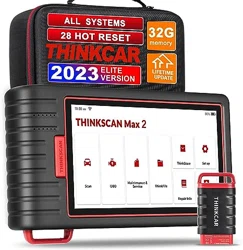Loading ...
Loading ...
Loading ...

EN
22
www.mythinkcar.com
THINKSCAN Max2
5.2.5 Throttle matching
Throttle matching is to utilize the car decoder to initialize the throttle actuator so that the
learning value of the ECU returns to the initial state. By doing these, the movement of the
throttle (or idle motor) can be more accurately controlled, thus adjust the intake volume.
Situations when throttle matching is needed:
a) After replacing the electronic control unit, the relevant characteristics of the throttle
operation have not been stored in the electronic control unit.
b) After the electric control unit is powered off , the memory of the electric control unit’s
memory is lost.
c) After replacing the throttle assembly, you need to match the throttle.
d) After replacing or disassembling the intake port, the controlling of the idle speed by the
coordination between the electronic control unit and the throttle body is aff ected.
e) Although the characteristics of the idle throttle potentiometer have not changed, the
intake volume has changed and the idle control characteristics have changed at the
same throttle openings.
5.2.6 Brake pad reset
When the brake pad reaches certain thickness, the brake pad induction wire will be worn.
At this time, the wire will send a signal induction wire to the on-board computer to prompt
the replacement of the brake pad. After replacing the brake pad, the brake pad need to be
reset, otherwise the car will continue to alarm. Situations when the reset is required:
a) After the brake pad is replaced and when brake pad wears sensors;
b) when the brake pad indicator lightens;
c) After the brake pad sensor circuit is repaired;
d) After the servo motor is replaced.
5.2.7 DPF regeneration
The DPF regeneration function is mainly to periodically use combustion oxidation methods
(such as: high-temperature heating and combustion, the combustion through the use of
fuel additives or catalysts to reduce the ignition point of particulate matters) to remove
particulate matters from the trap, so that the performance of the trap is always stable. DPF
regeneration matching is required in the following situations:
a) replace the exhaust back pressure sensor;
b) disassembly or replacement of the particle trap;
c) removal or replacement of fuel additive nozzles;
d) removal or replacement of catalytic oxidizer;
e) the DPF regeneration fault lamp is lit and matched after maintenance;
f) repair and replace the DPF regeneration control module.
5.2.8 Anti-theft matching
Loading ...
Loading ...
Loading ...
